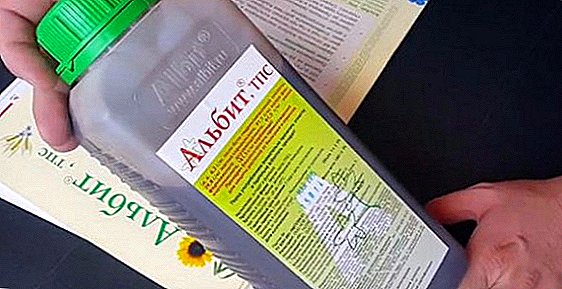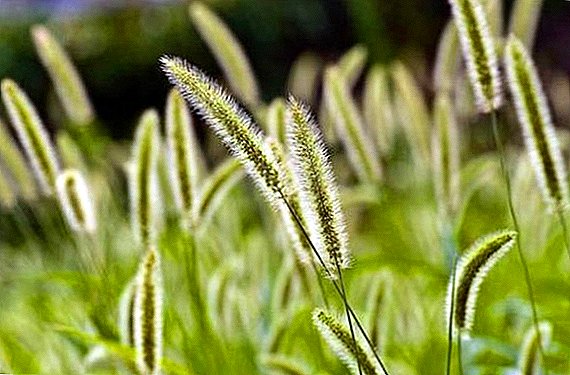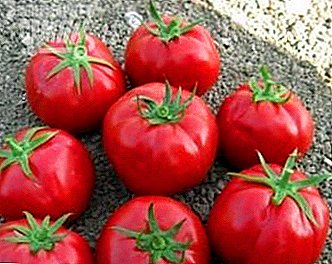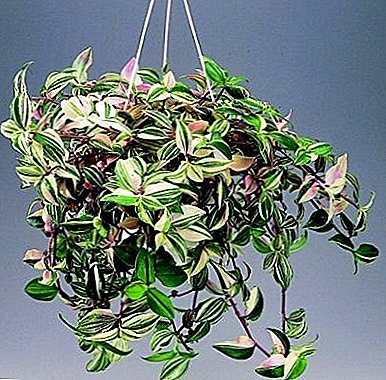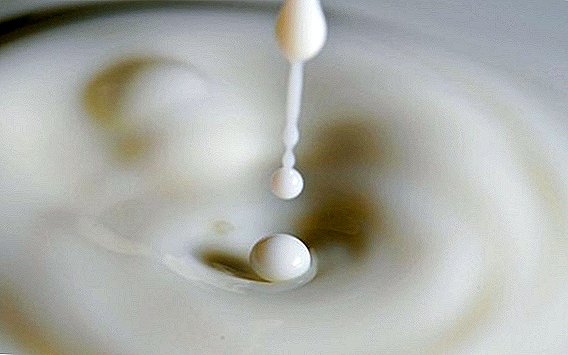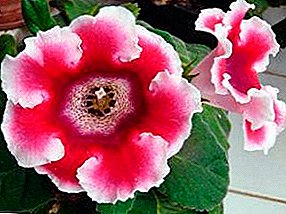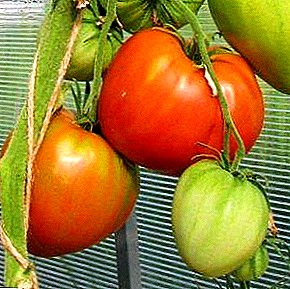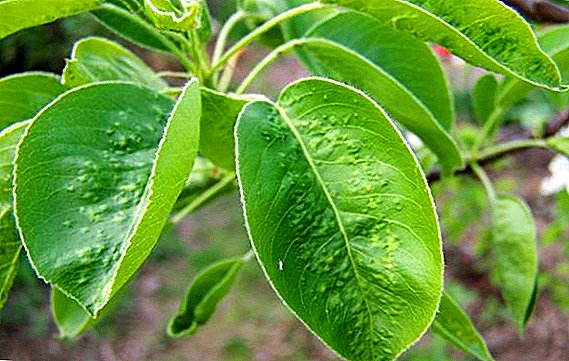 Quite often, gardeners are faced with various tree diseases and pests.
Quite often, gardeners are faced with various tree diseases and pests.
One of them is a pear gall mite, and how to deal with it, we will tell in this article.
What is the "enemy"
The pest has very small dimensions - the length of an adult individual is only 0.18 mm. Insects have a white color, which with the arrival of autumn is replaced by pink or light brown. The insect moves with the help of two pairs of legs.  It spends wintering between kidney scales. In one kidney there may be about 1500 insects. Even before the buds begin to bloom, each female lays 5-6 eggs, leaving them on the inside of the scales.
It spends wintering between kidney scales. In one kidney there may be about 1500 insects. Even before the buds begin to bloom, each female lays 5-6 eggs, leaving them on the inside of the scales.
Then, from them, the emergence of larvae, which by the time the buds begin to blossom, will become adult individuals. They dig into the not yet blossoming leaves and gradually contribute to the appearance of galls.
Important! Dead leaves from infected trees must be burned, as it may contain pest larvae.
On leaves that have been infected, yellow-brown begins to appear, and then blackening minor swellings. Sometimes there is a coalescence of pear galls, which creates the appearance of a "tumor".
Over time, drying of the epidermis and cracking of the galls are observed. In such a situation, ticks are looking for new young leaves and move to them. 
What harm from a tick
Having settled on the sheet, the pest begins to suck the juice out of it. In such leaves there is a violation of the water balance, a decrease in the amount of chlorophyll, stopping the photosynthesis process. The plant becomes weak.
If the tree attacked a large number of pests, the fruits grow, but have small sizes. Ticks are dangerous for plants in any period of development - they negatively affect the tree during its growth and during the formation of the fruit.
Gall mite often affects linden, mountain ash, sea buckthorn.
The gall mite on a pear can cause very great harm, so control measures should be taken immediately.
Often mass reproduction Gall mites contribute to the inept selection and frequent use of organophosphate agents that are intended for the death of their enemies. Sometimes the number of ticks increases due to the increase of their fertility under the influence of stimulating drugs. 
Means of struggle
If your garden attacked pear gall mite, treatment should be carried out as soon as possible. There are several ways to combat pest. Consider them in more detail.
Agrotechnical receptions
It is plant protection against pests using this method that is most effective. Thanks to the ground-growing tillage, the number of gall mites and their larvae is reduced.
Did you know? Ticks love heat. They will not reach the surface until the air warms to at least 10 ° C.
It protects against pests and the introduction of a variety of fertilizing with the use of mineral fertilizers. They allow to increase the osmotic pressure in the cell sap, which makes it difficult to feed the ticks.
To combat the galls, it is recommended to carry out the following agrotechnical measures:
- clean the stumps and skeletal branches from the old bark;
- collect and remove plant residues from the site (fallen fruit and leaves);
- regularly carry out pruning crown.
If there are no weeds in your garden, it will reduce the probability of tick breeding. 
Chemicals
In the fight against pear gall mites, it is common to use special agents — acaricides.
To implement the treatment of trees, it is recommended to use organophosphorus and chlorine-containing preparations. Thanks to this method, you can get rid of pests pretty quickly. They affect the mite's digestive system and lead to its death. The pear must be processed twice a week for 2 months.
Important! When buying new seedlings carefully inspect the leaves and shoots. The infected tree is a carrier of ticks, as a result of its planting other plants on the site may suffer.
Insect control can be carried out by injection. Due to the fact that the substance quickly penetrates into all parts of the plant, this allows you to get rid of a large number of pests.
If the tree struck a pear gall mite, what is the way to process the plant? You can use drugs such as "Decis", "Inta-vir" and "Fufanon." 
Folk methods
Some gardeners are in no hurry to use chemicals to kill pests, as they may adversely affect the quality of the crop. In this situation, preference is given to plant-based products.
If your garden attacked pear gall mite, you can use the means of combating folk remedies. For spraying use an infusion of marigolds, potatoes, dandelions, chamomile, garlic and ash.
Did you know? For the first time, gall mites were discovered in 1989 by an acarologist from Austria, Alfred Nalepa.
We offer to familiarize with some common recipes.
- Potato infusion. It is necessary to take 1 kg of fresh tops (can be replaced by 500 g dry), chop it thoroughly. Chopped tops pour 1 bucket of warm water. For 4 hours, this mixture is infused, then filtered, it is added 1 tbsp. spoon of soap. Use the solution within 24 hours after preparation.
- Infusion of marigolds. 100 g of flowers are added to 1 l of water and boiled. Broth insist 5 days and then diluted with the same amount of water.
- Infusion of dandelions. 1 kg of foliage pour 3 liters of water. Mixture insist 3 days. Then the solution is filtered and a small piece of soap is added to it.
Find out what to do if your garden is plagued by a spider mite.
Folk remedies have good effectiveness and help get rid of pests.
Gallic pear mite is a very dangerous insect that can cause great harm to both the crop and the tree. Having found a pest, it is necessary to immediately take measures against insects.



